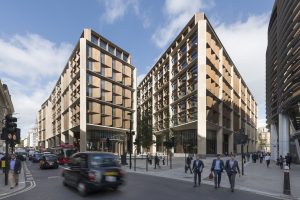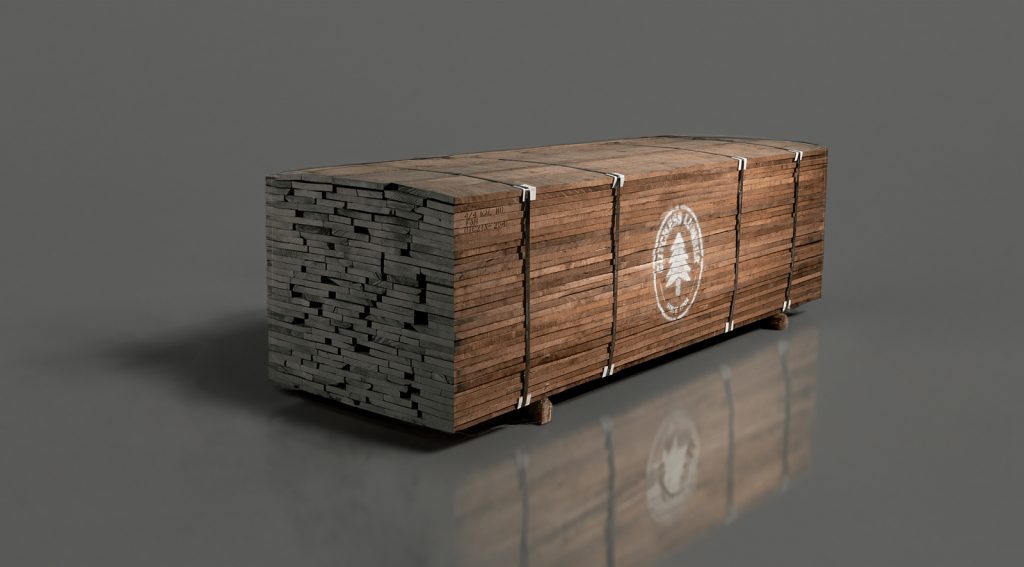Welcome to Gutchess Lumber, your trusted source for high-quality Northern hardwood lumber products. Our company proudly provides expertly manufactured hardwoods, which come from the Northeastern region of the United States. Our Northern hardwood species, including White Ash, Basswood, Birch, White Oak, Cherry, Hard Maple, Hickory, Poplar, Red Maple, Red Oak, and Walnut, are responsibly harvested and manufactured to maintain their unique characteristics. Our guide showcases each of the Northern hardwood species we offer, along with their common uses, physical characteristics, fast facts, and much more.
White Ash is a highly desirable hardwood species that is commonly used for a variety of applications. Its dense and bright sapwood, which is the outermost layer of the tree, makes it highly resistant to wear and tear and insect damage. The light tan heartwood, which is the inner layer of the tree, provides the wood with excellent shock resistance and flexibility, making it ideal for tool handles, baseball bats, and other sports equipment. The uniform annual growth rings of White Ash give it a consistent and attractive appearance that furniture makers and flooring manufacturers alike highly prize. The wood’s dimensional stability and excellent finishing properties make it popular for guitar bodies, cabinetry, and other high-end woodworking projects. White Ash is also a popular choice for lobster traps due to its durability and resistance to decay when exposed to saltwater. Overall, White Ash is a versatile and highly sought-after hardwood species that is suitable for a wide range of applications.
Basswood, also known as linden, is a popular hardwood choice due to its lightweight and soft texture. The wood has a lighter color with a fine, close grain, making it easy to work with hand tools. Basswood’s low density makes it an ideal wood for woodenware, such as bowls and spoons, as well as crates and blinds. Additionally, it’s often used for internal furniture parts because it’s relatively inexpensive and easy to shape. Its softness makes it an excellent wood for carving intricate designs or details, making it a preferred choice for many furniture manufacturers. In summary, basswood’s versatility and ease of use make it a go-to wood for various hardwood designs.
Birch hardwood is popular for various applications due to its versatile nature and beautiful appearance. With its straight or slightly wavy grain and fine, even texture, it is an ideal material for creating furniture pieces with a sleek and modern look and for more traditional designs. Birch hardwood’s light color allows it to be stained or painted to match any design aesthetic, making it a versatile option for kitchen cabinets, paneling, and moldings. Birch is also an excellent choice for interior doors, as it is durable and can withstand wear and tear. Its natural resistance to moisture and rot makes it a popular choice for flooring in high-traffic areas. In addition to these more common applications, Birch hardwood is also used for various specialty wood items, such as turnings, toys, and decorative items, due to its ease of working and carving properties.
Cherry is a popular and highly sought-after hardwood due to its warm and inviting reddish-brown tones, which deepen and improve over time. This heartwood is often highlighted with elegant and complex grain patterns, including curly, fiddle back, and birdseye figuring. Unlike other hardwoods, our Cherry hardwood has minimal gum spots, making it a premium choice for high-end furniture, cabinetry, and decorative woodwork. Its stunning appearance and durability make it a favorite among designers. It is often used for heirloom-quality pieces meant to last for generations. In addition to its aesthetic appeal, Cherry wood is easy to work with and finishes beautifully, making it a versatile material for a wide range of applications.
Hard Maple is renowned for its durability and strength, making it an excellent choice for many applications. The pale and creamy hardwood provides a blank canvas for various finishes. It also has a fine, uniform texture with a subtle grain pattern ranging from straight to curly or wavy. Due to its hardness, Hard Maple resists wear and tear, making it ideal for high-traffic areas such as gym and basketball courts, bowling alleys, and stairs. It’s also a popular choice for furniture and cabinetry, where it can be finished with a clear coat to showcase its natural beauty. Hard Maple’s resonant properties also make it a favored wood for musical instruments such as violins, guitars, and drumsticks. Its versatility and durability make it a valuable addition to any woodworking project.
Northern Shagbark Hickory is a type of hardwood highly valued for its toughness, durability, and resilience. This hardwood is renowned for its distinctive bark, which separates it from its southern counterpart. The sapwood is on the lighter side, while the heartwood ranges from a light to medium brown color. The wood has a tight, uniform grain that creates beautiful patterns and is easy to work with. Due to its high shock resistance, Northern Shagbark Hickory is perfect for use in cabinetry, tool handles, axles and shafts, bows, skis, paddles, furniture, and flooring. Its resistance to wear and tear, coupled with its toughness, makes it ideal for use in items that are frequently used or subject to heavy use. The wood is also well-suited for steam-bending, which is useful in furniture making and other woodworking projects. All in all, Northern Shagbark Hickory is an excellent choice for those who are looking for a strong and durable hardwood that is both beautiful and practical.
White Poplar hardwood is a versatile and sustainable hardwood that is easy to work with and finishes beautifully. Its unique lightness and strength make it an ideal choice for various applications, including furniture, interior trim, toys, and even musical instruments. The wood’s light color and subtle grain pattern provide a neutral backdrop for any decorative or finishing touches, and it can be stained or painted to match any design scheme. Our White Poplar is sourced from prime timberland in the northern Appalachian region of Pennsylvania, near our manufacturing facilities, ensuring we can access the highest quality wood available while minimizing our environmental impact.
Red Maple hardwood is a popular choice for a variety of applications due to its moderate density, straight grain, and subtle figure. Its heartwood ranges from light to dark reddish-brown and its sapwood is white with a reddish tinge. Red Maple is often used for flooring, cabinets, furniture, veneer, and musical instruments such as drums and pianos. Due to its durability and workability, Red Maple is widely available and relatively affordable compared to other hardwoods, making it an excellent choice for both commercial and residential applications.
Red Oak is a widespread species of hardwood known for its strength, durability, and distinctive grain patterns. The heartwood of Red Oak ranges from light to medium brown, while the sapwood is a pale yellow color. With a coarse and open grain, Red Oak is easy to work with and can be finished to showcase its natural beauty. It is commonly used in flooring, cabinets, furniture, veneer, and millwork due to its strength, shock resistance, and affordability. The wood is also ideal for steam-bending, allowing it to be shaped into various forms for decorative and structural purposes. Red Oak is a versatile hardwood suitable for many applications, making it a favorite.
American Black Walnut is a highly valued hardwood known for its rich, dark color and straight grain. The heartwood of this medium-density hardwood is a deep, dark red, while the steamed sapwood is dark in color. Our Black Walnut is sourced from North Central Ohio, where the wood is highly sought after for its color and workability. Its exceptional machining and bending properties make it ideal for furniture, paneling, cabinets, doors, paddles, coffins, flooring, and rifle stock. This versatile hardwood can be polished or stained to an exceptional finish, making it a popular choice for various high-end applications.
White Oak is a highly desirable hardwood due to its durability and strength and is therefore used in a wide range of applications beyond whiskey and wine barrels. It has a fine, uniform texture with straight grains and is highly resistant to decay and insect attacks. This makes it ideal for outdoor furniture, boat building, flooring, millwork, and cabinetry. Its natural resistance to moisture also makes it a popular choice for outdoor structures such as decks, patios, and pergolas. Additionally, White Oak is highly valued for its appearance, with the heartwood often displaying a range of colors from pale yellow-brown to dark brown with a hint of olive green and the sapwood being only slightly lighter. Its distinctive grain patterns make it a popular choice for decorative applications, and its hard-wearing properties ensure that it remains a favorite for furniture designers and makers.
At Gutchess Lumber, we take pride in providing high-quality hardwoods, including White Ash, Basswood, Birch, White Oak, Cherry, Hard Maple, Hickory, Poplar, Red Maple, Red Oak, and Walnut. Each species has unique physical characteristics and uses, and we ensure they are treated with the respect they deserve. We are committed to maintaining our 120-year reputation as a trustworthy and reliable provider of hardwood lumber and look forward to serving our customers for years to come. Choose us for all your hardwood needs and experience the difference in quality and customer service.



















